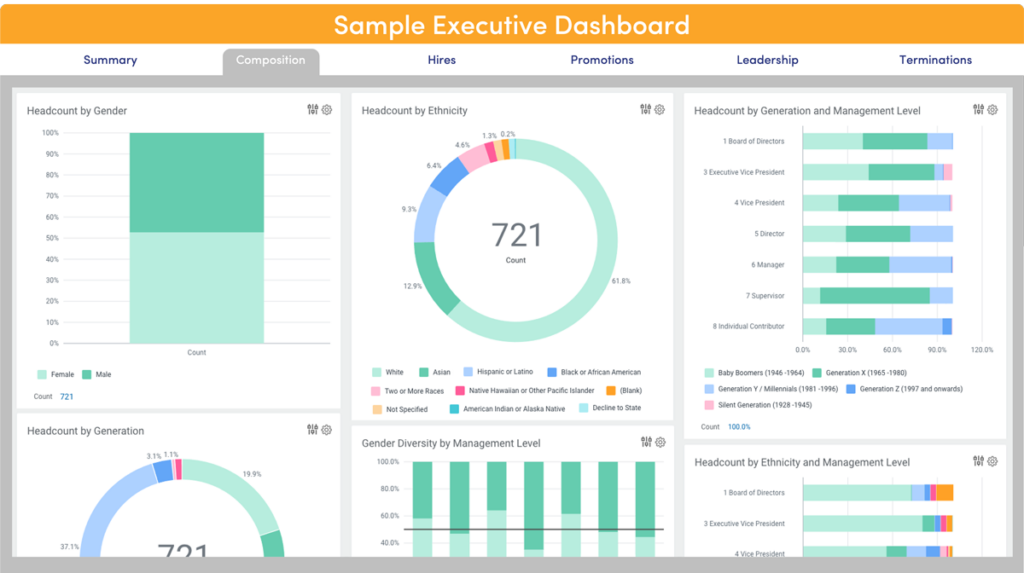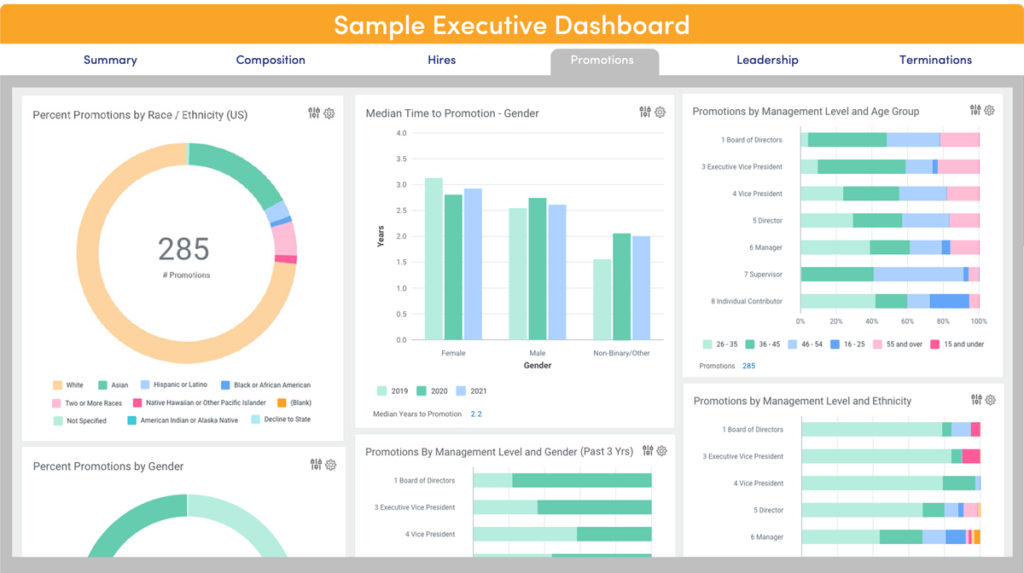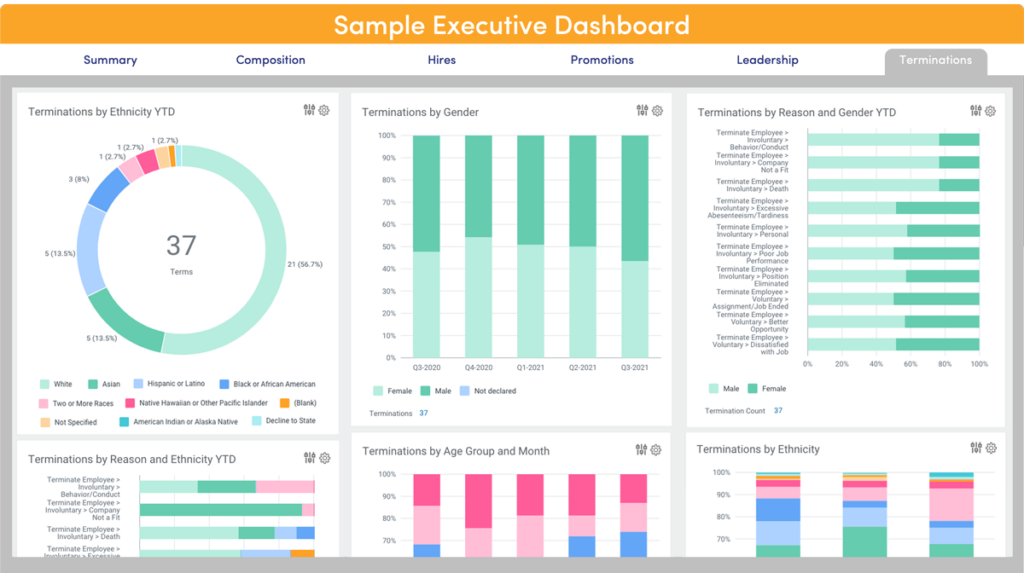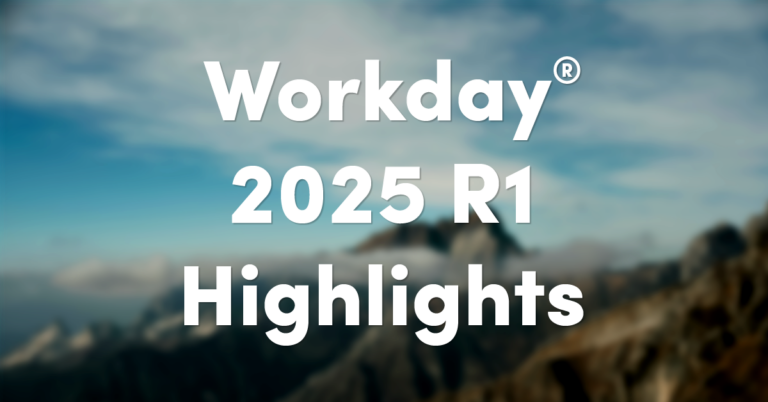Effective data visualization tools are essential for HRIS managers aiming to make informed decisions. Workday offers two powerful tools—Discovery Boards and Dashboards—that serve distinct purposes in analyzing and presenting data.
Understanding the differences between these tools (and knowing when to use each) can significantly enhance your HR analytics strategy.
Here, we’ll explore the unique features of Discovery Boards and Dashboards, guiding you on how to leverage both effectively in your organization.
But first – Viz vs. Custom Report
Before diving the differences between Discovery Boards and Dashboards, it important to understand the components that these options are built on. Because Viz’s and Custom Reports are created using entirely different engines in Workday, it means that Discovery Boards and Dashboards are built on fundamentally different types of foundations.
Viz(for Discovery Boards) |
Custom Report(for Dashboards) |
|---|---|
|
Workday Drive is required to build (and store) Viz’s & Discovery boards |
Built in the Workday Report Wrtier, this has been the traditional method of reporting in Workday since the beginning |
|
Only pulls from Indexed data sources – this means that non-indexed data sources are not available in this tool |
Can use any and all data sources – Indexed or Standard |
|
The tool is designed for drag & drop use, which beginners may see as more agile |
Have a higher barrier to entry than constructing Viz’s due to their more technical nature |
|
Limited options for Prompts and Filters |
More options and flexibility with Prompts and Filters |
Note: you must have access to the Workday Drive security domain to access Viz’s/Discovery Boards. After that, your access to data sets will match the same security policies that apply to standard and custom reporting.
Discovery Boards
Discovery Boards are a quick and agile data analysis tool that allow users to easily explore and visualize data. They are highly interactive, allowing users to drag and drop data and manipulate data quickly. These are intended for data exploration, so they change often based on your needs.
Discovery Boards are a lightweight data discovery tool that navigate through data more intuitively. You can create custom visualizations without being an experienced report writer. And, with a variety of ways to visualize the data, sharing insights becomes easier and more effective.
Key Features of Discovery Boards:
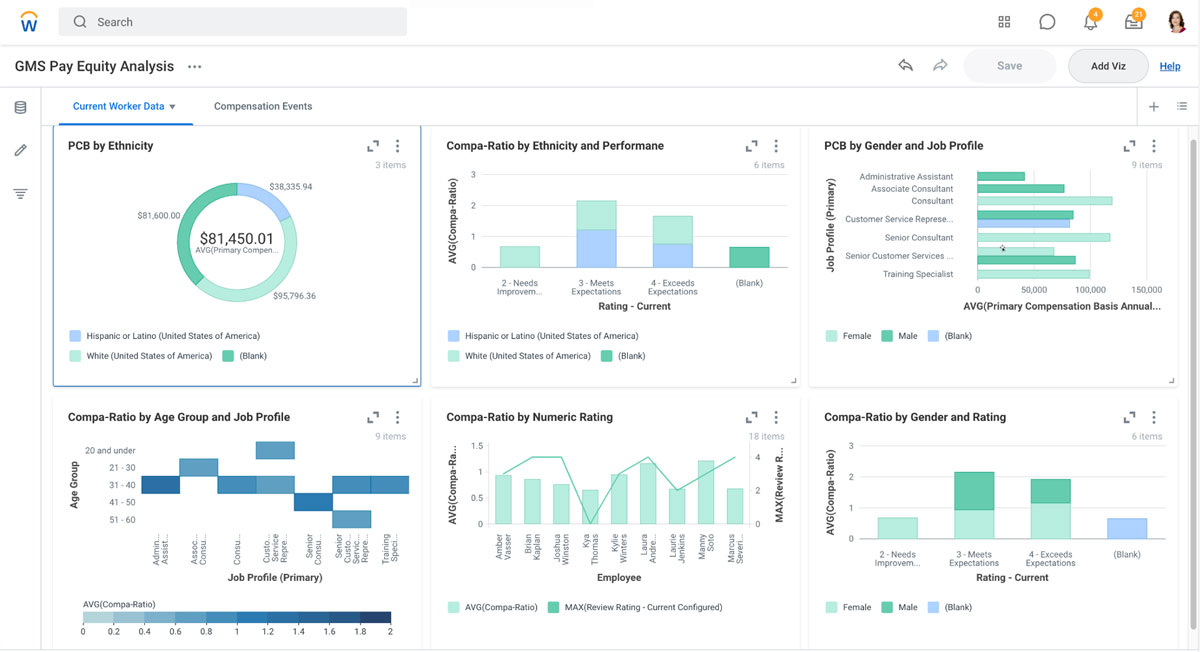
Dashboards
Dashboards are a place where related reports can be accessed in a centralized location. With an end-goal in mind, data is displayed in the same way every time, creating a curated experience. They are typically used for high-touch, decision-making scenarios, as they offer predefined prompts and visibility and controlled linking within tenants. Dashboards are infinitely customizable and act as a centralized “source of truth” for whatever your use case is.
Dashboards provide a consistent experience that make data easy to understand while saving time analyzing a topic.
Key Features of Dashboards:
Example of Commit’s Custom Dashboards
When should I use a Discovery Board or a Dashboard?
Both Workday Discovery Boards and Dashboards offer valuable functionalities that cater to different needs – and speeds.
Discovery Boards
Dashboards
Discovery boards are a fantastic tool for ad hoc discovery, where you can manipulate data in real time to get answers to the “right now” questions.
For example, if the CHRO asks how many people are in your department and for the comp ratio over that company sector, an analyst can leverage Discovery Board’s drag-and-drop UI to find that answer quickly, without spending time building a more complex advanced report.
And Discovery Boards aren’t just for HR/Systems Analysts & Report Writers. Compensation or Business Analysts from other departments can use Discovery Boards to get a feel for spend and trends in their specific department. Or a more data-saavy Director or leader who wants to play with their team’s demographic, hr, and payroll data can easily explore that data in Discovery Boards and create different visualizations.
How to Use Discovery Boards
Discovery Boards are a free tool that every Workday customer can use. They are an entry point for data analysis, similar to a project workspace. Users can experiment with the data in Discovery Boards without having to learn the Workday report writer tool.
All Discovery Boards are stored within Workday Drive, so you will need to enable Drive to get started. Once Workday Drive is enabled, users can create a Discovery Board workspace and begin dragging and dropping data elements to create visualizations. You can share them with other users in the same way you can share other document stored in Workday Drive.
In terms of security and data visibility, you will have access to the same datasets within Discovery Boards as you do in the standard Workday report writer
A Sign of Things to Come?
Dashboards will continue to fulfill the specific needs of organizations & Workday users, but don’t sleep on Discovery Boards! Here are 4 Reasons to try them out!
We do recommend that even seasoned report writers dive in and become familiar with the Discovery Board / Viz functionality. The technology driving them is here to stay and may be a sign of the things to come in other reporting areas.

